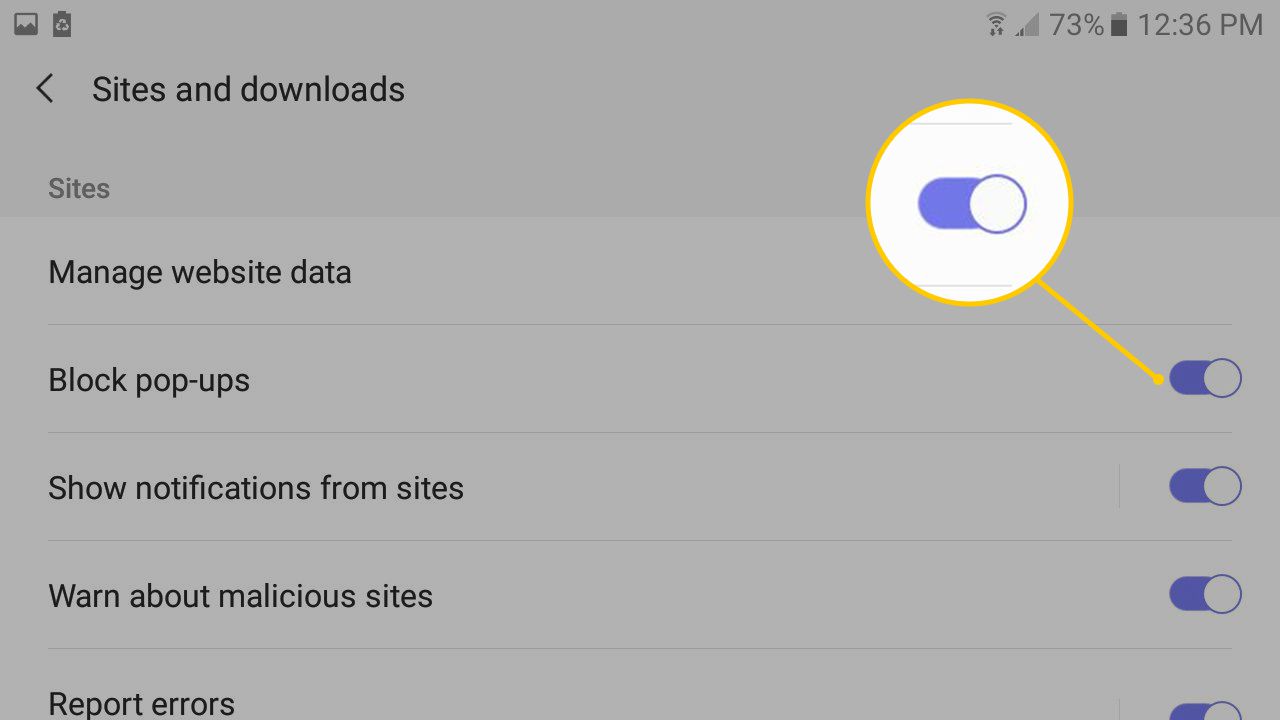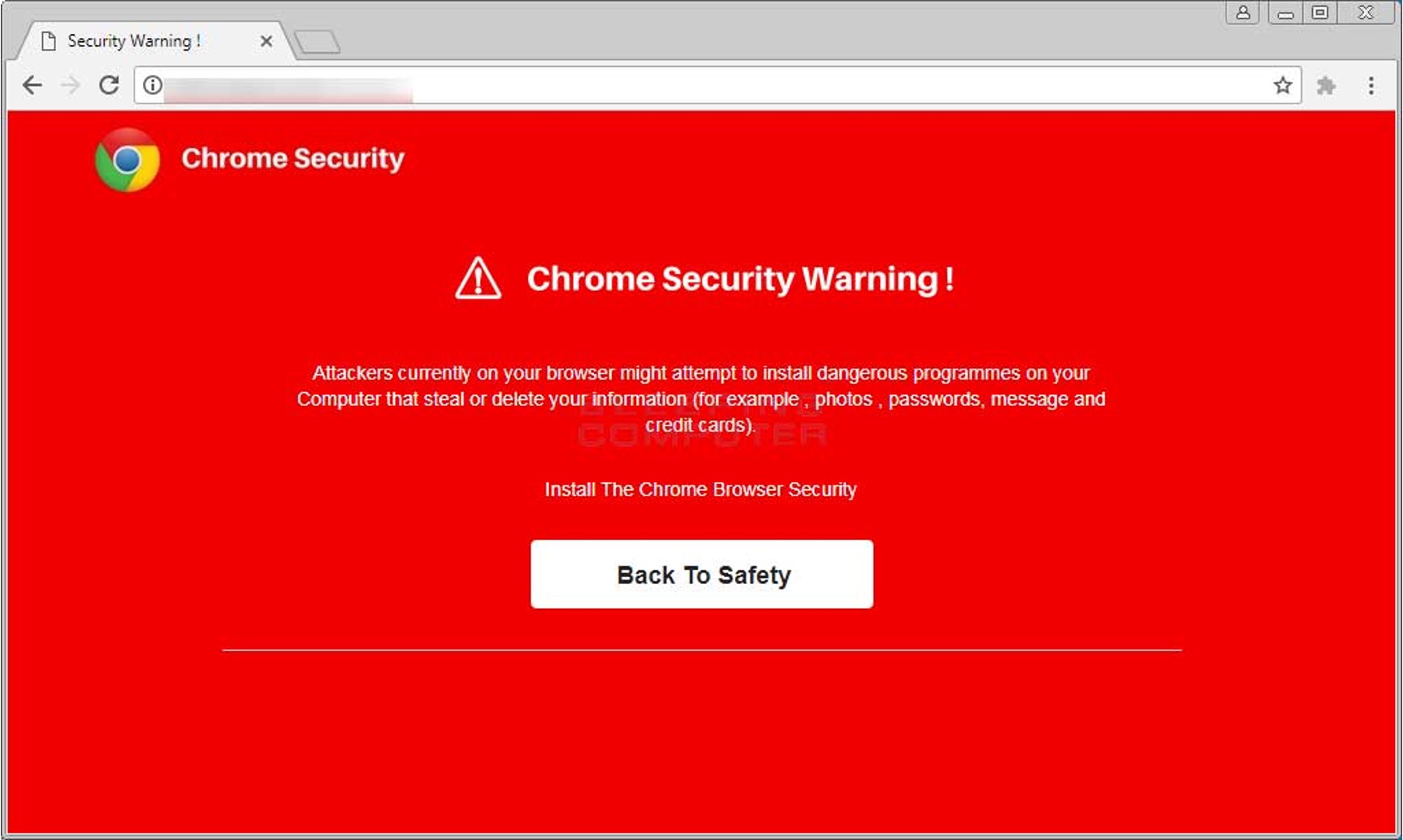Introduction
Google Chrome is one of the most popular web browsers, known for its speed, simplicity, and user-friendly interface. However, like any software, it is not immune to issues such as viruses, malware, and unwanted extensions that can compromise your browsing experience and put your personal information at risk. If you've noticed unusual pop-ups, redirects to unfamiliar websites, or a sudden slowdown in your browser's performance, it's possible that your Google Chrome browser has been infected with a virus.
Dealing with a virus on your web browser can be frustrating, but the good news is that there are effective steps you can take to eliminate the threat and restore your browser to its optimal state. In this guide, we will walk you through the process of getting rid of a virus on Google Chrome, providing you with practical and actionable solutions to safeguard your online activities.
By following the steps outlined in this article, you can regain control of your browsing experience and ensure that your personal data remains secure. Whether you're a casual internet user or rely on Google Chrome for work-related tasks, it's essential to address any potential security threats promptly. With the right approach and a bit of know-how, you can effectively remove viruses from your Google Chrome browser and enjoy a safer and smoother online experience. Let's dive into the steps that will help you reclaim the security and performance of your browser.
Step 1: Update Google Chrome
Keeping your Google Chrome browser up to date is crucial for maintaining its security and performance. Regular updates not only introduce new features and improvements but also address known vulnerabilities and security issues. By ensuring that you have the latest version of Chrome installed, you can significantly reduce the risk of encountering viruses and malware while browsing the web.
To update Google Chrome to the latest version, follow these simple steps:
-
Open Google Chrome: Launch the Chrome browser on your computer or mobile device.
-
Access the Menu: Click on the three-dot menu icon located in the top-right corner of the browser window. This will open a dropdown menu.
-
Navigate to "Help": Within the dropdown menu, hover over the "Help" option to reveal a sub-menu.
-
Select "About Google Chrome": Click on the "About Google Chrome" option from the sub-menu. This will open a new tab displaying information about the current version of Chrome and whether an update is available.
-
Check for Updates: Google Chrome will automatically check for updates and begin downloading the latest version if one is available. If an update is found, you will be prompted to restart the browser to apply the update.
-
Restart Chrome: After the update has been downloaded, click the "Relaunch" button to restart the browser and apply the latest version.
By following these steps, you can ensure that your Google Chrome browser is running the most recent version, equipped with the latest security patches and enhancements. This proactive approach to updating your browser not only helps in preventing potential security threats but also ensures that you have access to the newest features and improvements offered by Google Chrome.
In addition to manually checking for updates, you can enable automatic updates for Google Chrome to streamline the process. Automatic updates ensure that your browser stays current without requiring manual intervention, providing ongoing protection against security vulnerabilities and keeping your browsing experience smooth and secure.
By prioritizing the regular updating of Google Chrome, you can bolster the security of your browser and minimize the risk of encountering viruses and malware during your online activities. This simple yet essential step sets the foundation for a safer and more reliable browsing experience, allowing you to make the most of what Google Chrome has to offer while safeguarding your digital presence.
Step 2: Clear Browsing Data
Clearing your browsing data in Google Chrome is an effective way to remove temporary files, cookies, and other site data that may be contributing to the presence of viruses or unwanted behavior in your browser. By performing this essential maintenance task, you can eliminate potentially harmful elements and enhance the overall performance and security of your browsing experience.
To clear your browsing data in Google Chrome, follow these simple steps:
-
Open Google Chrome Settings: Click on the three-dot menu icon in the top-right corner of the browser window and select "Settings" from the dropdown menu. Alternatively, you can type "chrome://settings/" in the address bar and press Enter to directly access the settings page.
-
Navigate to the Privacy and Security Section: In the Settings menu, scroll down and click on "Privacy and security" in the left-hand navigation panel. This will expand the privacy and security options.
-
Access the Clear Browsing Data Tool: Under the "Privacy and security" section, click on "Clear browsing data." This will open the Clear browsing data window, allowing you to customize the data removal process.
-
Choose the Data to Clear: In the Clear browsing data window, you can select the types of data you want to clear, such as browsing history, cookies and other site data, cached images and files, and more. You can also specify the time range for which you want to clear the data, such as the past hour, day, week, or all time.
-
Initiate the Data Clearing Process: After customizing your preferences, click on the "Clear data" button to initiate the data clearing process. Google Chrome will remove the selected browsing data based on your specifications.
By clearing your browsing data, you can effectively remove temporary files, cookies, and cached content that may be harboring viruses or causing unusual behavior in your browser. This process not only helps in eliminating potential security threats but also contributes to optimizing the performance of Google Chrome.
Regularly clearing your browsing data is a proactive measure that can help maintain the health and security of your browser, ensuring a cleaner and more secure browsing environment. By incorporating this simple yet impactful practice into your routine, you can minimize the risk of encountering viruses and malware while enjoying a smoother and more secure browsing experience in Google Chrome.
Step 3: Reset Google Chrome Settings
Resetting Google Chrome settings can be a powerful solution for addressing persistent issues, including the presence of viruses or unwanted behavior in the browser. This process effectively restores Chrome to its default state, eliminating any custom settings, extensions, or configurations that may be contributing to the underlying problems. By initiating a reset, you can effectively clear out potential sources of interference and restore the browser to a clean and stable state.
To reset Google Chrome settings, follow these steps:
-
Open Google Chrome Settings: Click on the three-dot menu icon in the top-right corner of the browser window and select "Settings" from the dropdown menu. Alternatively, you can type "chrome://settings/" in the address bar and press Enter to directly access the settings page.
-
Navigate to the Advanced Settings: In the Settings menu, scroll down and click on "Advanced" to expand the advanced settings options.
-
Access the Reset and Clean Up Section: Under the "Reset and clean up" section, click on "Restore settings to their original defaults." This will open the Reset settings window, providing you with the option to initiate the reset process.
-
Confirm the Reset: In the Reset settings window, you will be presented with a summary of the changes that will occur as a result of the reset. This includes the restoration of default settings, the removal of extensions, and the clearing of temporary data. To proceed, click on the "Reset settings" button.
-
Restart Google Chrome: After confirming the reset, Google Chrome will restart to apply the changes. Upon relaunching the browser, you will notice that the settings have been reverted to their original defaults.
By resetting Google Chrome settings, you can effectively eliminate potential sources of interference and restore the browser to a clean and stable state. This process removes custom configurations, extensions, and settings that may be contributing to the presence of viruses or unwanted behavior in the browser, providing a fresh start for your browsing experience.
It's important to note that resetting Chrome settings will result in the removal of installed extensions and the clearing of temporary data. As a result, you may need to reconfigure certain preferences and reinstall extensions after the reset. However, this trade-off is worthwhile as it allows you to address persistent issues and restore the browser to a secure and reliable state.
Incorporating the practice of resetting Google Chrome settings into your troubleshooting routine can be instrumental in addressing complex issues and ensuring the overall health and security of your browsing experience. By leveraging this powerful feature, you can effectively combat the presence of viruses and unwanted behavior in Google Chrome, empowering you to enjoy a safer and more seamless browsing environment.
Step 4: Remove Suspicious Extensions
Google Chrome's extensive library of extensions offers users a wide range of functionalities and enhancements, allowing for a personalized browsing experience. However, the presence of suspicious or malicious extensions can compromise the security and performance of the browser, leading to intrusive ads, unauthorized data collection, and other undesirable consequences. Identifying and removing such extensions is crucial in maintaining a secure and reliable browsing environment.
To remove suspicious extensions from Google Chrome, follow these steps:
-
Open the Extensions Menu: Click on the three-dot menu icon in the top-right corner of the browser window and navigate to "More tools" > "Extensions." Alternatively, you can type "chrome://extensions/" in the address bar and press Enter to directly access the extensions page.
-
Identify Suspicious Extensions: Upon accessing the Extensions page, review the list of installed extensions. Look for any unfamiliar or suspicious extensions that you do not remember installing. Pay attention to extensions that exhibit intrusive behavior, such as displaying excessive ads, redirecting webpages, or causing unexpected changes in your browsing experience.
-
Remove Suspicious Extensions: For each identified suspicious extension, click on the "Remove" button next to it. Confirm the removal when prompted. This action will uninstall the extension from Google Chrome, effectively eliminating its potential impact on your browsing activities.
-
Restart Google Chrome: After removing the suspicious extensions, restart the browser to ensure that the changes take effect. This step helps in refreshing the browser and ensuring that the removed extensions no longer exert any influence on your browsing sessions.
By removing suspicious extensions from Google Chrome, you can mitigate the risk of encountering intrusive ads, unauthorized data tracking, and other security-related issues. This proactive approach helps in safeguarding your browsing experience and protecting your personal information from potential threats posed by malicious extensions.
Regularly reviewing and managing your installed extensions is essential for maintaining a secure and efficient browsing environment. By staying vigilant and promptly removing any suspicious or unauthorized extensions, you can uphold the integrity of your browser and enjoy a safer and more streamlined online experience.
Taking the time to audit and remove suspicious extensions from Google Chrome demonstrates a proactive stance towards safeguarding your digital presence. By incorporating this practice into your routine maintenance, you can effectively fortify the security of your browser and minimize the risk of encountering harmful extensions that may compromise your online activities.
Step 5: Run a Malware Scan
Running a malware scan is a crucial step in ensuring the security and integrity of your Google Chrome browser. Malware, including viruses, spyware, and other malicious software, can pose significant threats to your online privacy and the overall performance of your device. By conducting a thorough malware scan, you can detect and eliminate any harmful software that may have infiltrated your system, providing a vital layer of protection against potential security breaches.
To run a malware scan on your system, you can utilize reputable antivirus and anti-malware software. Many security solutions offer dedicated tools for scanning and removing malware from web browsers, including Google Chrome. These programs employ advanced detection algorithms to identify and eradicate a wide range of malicious threats, safeguarding your browsing activities and personal data.
When initiating a malware scan, it's essential to ensure that your antivirus software is up to date, as new malware variants are constantly emerging. Once you have confirmed that your security software is current, initiate a full system scan to comprehensively examine all files, programs, and browser components for any signs of malware.
During the scanning process, the antivirus software will meticulously analyze the contents of your system, including the files and settings associated with Google Chrome. If any malware is detected, the software will prompt you to take appropriate actions, such as quarantining or removing the identified threats.
After the malware scan is complete, it's advisable to review the scan results to understand the nature of any detected threats and the actions taken by the antivirus software. Additionally, consider performing a targeted scan specifically focused on the Google Chrome directory to ensure that any browser-specific malware is effectively addressed.
By running a malware scan on your system, you can proactively identify and eliminate potential security risks, fortifying the resilience of your Google Chrome browser against malicious attacks. This proactive approach to cybersecurity empowers you to maintain a secure and reliable browsing environment, allowing you to navigate the web with confidence and peace of mind.
Incorporating regular malware scans into your cybersecurity routine is essential for staying ahead of evolving threats and preserving the integrity of your digital ecosystem. By leveraging the capabilities of reputable antivirus software and conducting thorough malware scans, you can effectively safeguard your Google Chrome browser and uphold the security of your online activities.
Conclusion
In conclusion, addressing a virus on Google Chrome requires a proactive and multifaceted approach to ensure the security and integrity of your browsing experience. By following the steps outlined in this guide, you can effectively combat the presence of viruses, malware, and unwanted extensions, empowering you to reclaim control of your browser and enjoy a safer online environment.
Updating Google Chrome to the latest version serves as a foundational step in bolstering the browser's security and performance. By staying current with updates, you can benefit from the latest security patches and enhancements, reducing the risk of encountering potential vulnerabilities.
Clearing browsing data in Google Chrome is a vital practice that helps in eliminating temporary files, cookies, and cached content that may harbor viruses or contribute to unusual behavior in the browser. This maintenance task not only enhances security but also contributes to optimizing the overall performance of Chrome.
Resetting Google Chrome settings provides a powerful solution for addressing persistent issues and restoring the browser to a clean and stable state. By initiating a reset, you can effectively eliminate potential sources of interference and restore the browser to its default configuration.
Removing suspicious extensions from Google Chrome is essential for mitigating the risk of encountering intrusive ads, unauthorized data tracking, and other security-related issues. Regularly reviewing and managing installed extensions is crucial for maintaining a secure and efficient browsing environment.
Running a malware scan using reputable antivirus and anti-malware software is a critical step in detecting and eliminating harmful software that may have infiltrated your system. By conducting thorough malware scans, you can fortify the resilience of your Google Chrome browser against malicious attacks and safeguard your online activities.
By incorporating these proactive measures into your routine maintenance, you can effectively combat the presence of viruses and malware on Google Chrome, ensuring a safer and more reliable browsing experience. Prioritizing the security and integrity of your browser empowers you to navigate the web with confidence, knowing that your digital presence is safeguarded against potential threats.
In essence, by following the steps outlined in this guide and adopting a proactive stance towards browser security, you can effectively eliminate viruses and fortify the resilience of your Google Chrome browser, enabling you to enjoy a seamless and secure online experience.

























